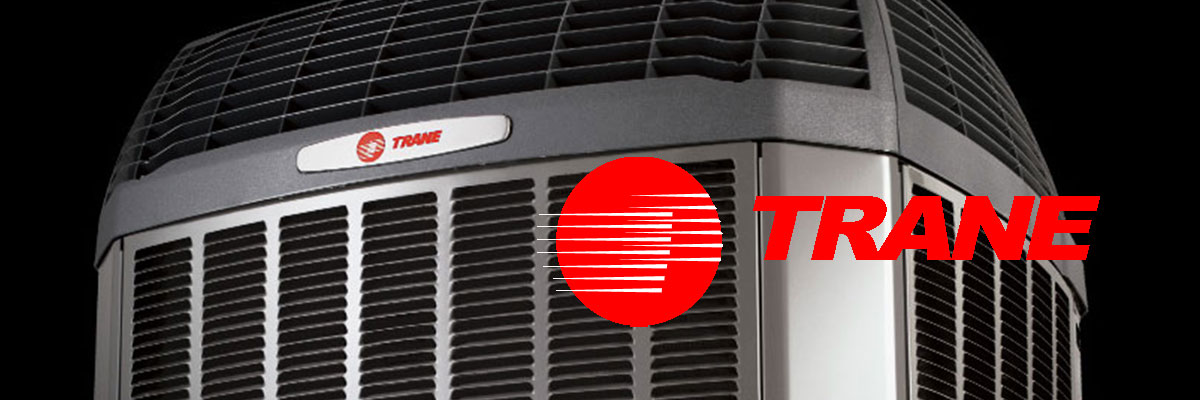Trane
It’s Hard to Stop a Trane.
Get the best comfort experience with Trane. With over 100 years in the industry, the most trusted and reliable brand on the market.


3 Types of Systems
For Air Conditioning
Single Stage
In the context of air conditioning, a single-stage system typically refers to a cooling system with only one level of operation. It means that the compressor has only one speed, and it operates at that speed whenever the system is running. This type of system is either fully on or fully off, providing a constant level of cooling.
Two Stage
A two-stage air conditioning system refers to a cooling system that has two levels of operation for the compressor. Unlike a single-stage system that has only one speed (on or off), a two-stage system has two compressor speeds: a lower speed for milder weather conditions and a higher speed for hotter days. This allows for more efficient and precise temperature control.
Here’s how a two-stage air conditioning system typically operates:
First Stage (Low): In mild weather or when the cooling demand is not very high, the system operates at the lower speed. This stage is energy-efficient and helps maintain a consistent and comfortable indoor temperature without using excessive energy.
Second Stage (High): When the outdoor temperatures rise and more cooling power is needed, the system switches to a higher speed. This stage provides additional cooling capacity to meet the increased demand during hotter days.
The advantage of a two-stage system is that it can adapt to varying cooling requirements, resulting in better energy efficiency and improved comfort. It can run at a lower speed for longer periods, which not only saves energy but also helps dehumidify the air more effectively.
Two-stage systems are often more expensive upfront compared to single-stage systems, but they can offer energy savings and improved comfort over the long term, especially in regions with fluctuating temperature conditions.
Variable Speed
A variable-speed air conditioning system, also known as a variable-speed or variable-capacity system, is an advanced type of HVAC (Heating, Ventilation, and Air Conditioning) system that offers even greater flexibility and energy efficiency compared to single-stage or two-stage systems.
Here are key features and characteristics of a variable speed air conditioning system:
Compressor Speed Variation: Unlike single-stage or two-stage systems, a variable speed system has a compressor that can operate at a range of speeds. It can modulate the speed based on the cooling demand, allowing for more precise temperature control.
Energy Efficiency: Variable speed systems are highly energy-efficient because they can operate at lower speeds during periods of lower demand. This helps to reduce energy consumption and maintain a more consistent indoor temperature without the need for frequent cycling on and off.
Improved Dehumidification: Variable speed systems can run at lower speeds for longer durations, enhancing their ability to remove moisture from the air. This is particularly beneficial in humid climates as it helps improve indoor comfort by reducing humidity levels.
Quiet Operation: These systems often operate more quietly than traditional systems because they don’t need to cycle on and off frequently. The gradual and continuous adjustment of the compressor speed contributes to a quieter overall operation.
Zoning Compatibility: Variable speed systems are well-suited for zoning applications, where different areas of a home or building have varying heating and cooling needs. They can adapt to the specific requirements of each zone.
Smart Thermostat Integration: Variable speed systems are often compatible with smart thermostats, allowing for more sophisticated and programmable control. Smart thermostats can optimize the system’s performance based on factors such as occupancy patterns and external weather conditions.
While variable speed systems typically come with a higher upfront cost compared to traditional systems, the potential energy savings and improved comfort can make them a cost-effective choice over the long term. They are especially suitable for homeowners or businesses looking for advanced HVAC technology and enhanced energy efficiency.

Trane
Heat Pumps
Trane heat pumps are a smart, versatile, and quiet way to heat and cool your home in a mild climate. Units are available in SEER2 ratings up to 20.5 and HSPF2 ratings up to 9 for maximum efficiency and lower energy bills. HEAT PUMPS

Why is indoor
Air Quality Important?
We spend 90% of our time indoors, and 70% of that is in our home* where the air can be up to 5X poorer quality than the air outside**. To help improve your indoor air, Trane offers a complete portfolio of air filtration equipment for whole home solutions for new and existing units.
** U.S. Environmental Protection Agency. EPA/600/6-87/002a. (1987)

